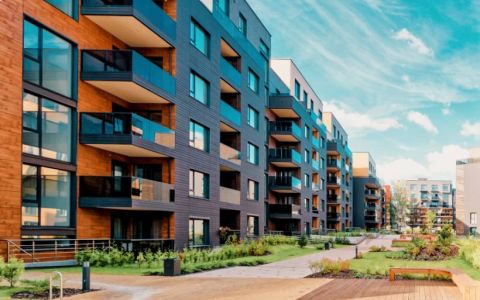
Residential ventilation: Saving time on design and installation

In response, industry has increasingly been using new mechanical ventilation solutions to provide adequate ventilation whilst complying with conflicting regulations. Although these are going some way to address the issue, they have required the built environment to acquire new skills and capabilities during the design and installation phase of construction. This necessity has come at a time when the pressures to increase site completions has risen and there is a recognised skills shortage.
Combine this with the industry’s collective focus on saving construction and operating costs and the Government’s focus on saving energy and ensuring quality within new developments, and ventilation specification quickly moves beyond the required number of air changes.
When addressing the challenge of ventilation specification, design and installation, there are a number of important factors to take into account.
Choose a product designed with installation in mind
At GDHV, our ventilation products have been designed with a heavy focus on ease of installation from the very start. We know that the issues associated with mechanical ventilation, such as noise, increased time spent on complex installation and the challenge of product inflexibility can be mitigated through product design rather than requirements on-site; helping you to implement a high quality of ventilation installation during construction.
Individual mechanical ventilation
For individual mechanical ventilation installations such as mechanical bathroom and kitchen fans, the cost of a problematic installation can potentially exceed the cost of the fan itself. In addition, if not installed correctly the fan will absorb more power and create excessive noise.
This is why we have designed our fans in conjunction with contractors to ensure ease and speed of installation. Our Simply Silent range benefits from simplified installation due to a number of design considerations such as quick fit clamps, large cable access, radial fixing points, level reference lines and hook and clip fan covers. In addition, the range has been designed for flexible placement, enabling installation on either the ceiling, wall or window mounted as suits your preferred design.
Our collaboration with contractors also raised another installation challenge with individual mechanical ventilation installations: the need for external ladders and scaffolding to install external grills. This is why we have designed a kit that can allow this installation to take place purely from inside the building, utilising specially designed folding grilles. Not only does this provide benefits through costs savings and reduced installation time, but also allows for a safer installation.

System ventilation
Ventilation systems are becoming more prominent within new developments, as U-values are set to decrease further in future updates to building regulations. In particular, due to the ever-increasing importance of good indoor air quality and low power usage, the market is seeing a marked increase in Mechanical Ventilation with Heat Recovery (MVHR).
This is why, in the design and development of our ventilation systems, we have taken a similar approach to our individual fans, although we were faced with greater challenges due to the complexity of ducted applications. Despite these challenges, ease of installation and hassle-free handling remains at the core of our MVHR unit, the Natural Air 180 (NA180).
Designed to separate into two sections rather than the usual one, the NA180 is significantly more portable than other MVHR units on the market. The metal outer case weighs in at 9.5kg and the EPP inner section is 10kg, so it’s much lighter than similar products, making it easier to install on-site.
The commissioning process is also taken into consideration in the design of the NA180. The unit is fitted with constant-volume fans, so you simply dial in the required air volume for trickle and boost speeds with the knowledge that the unit will produce what is required. From this, it becomes the simpler matter of balancing the system between rooms, thereby both reducing time for commissioning and simplifying the process.
Speak to your manufacturer for in-depth design and installation advice
It is not only on-site where manufacturers can provide benefits to a project’s ventilation system. At GDHV we engage with the architects, consultants and contractors at the design phase to make our recommendations, working closely with them to understand the layouts and produce detailed ducting drawings, including 3D, to ensure every bend and run is correct.
If the duct layout is wrong then not only will the unit absorb more power and create excessive noise, the performance of the whole system will be impaired, potentially requiring additional cost and time to correct the ducting should the system fail commissioning processes.
This is why we offer advice on the unit and system design and installation, propose in-depth ducting designs and suggest the optimum position for the unit to make the system as effective as possible. GDHV’s support aids your project not only by giving your contractors an efficient design for installation, but also by working to ensuring that your homes have sufficient ventilation with good energy performance once complete.
As well as offering project specific support, we also have full training capabilities to offer engineers certification to BPEC standards, which has been utilised by companies across the industry. These courses can be run at one of our regional training centres or at contractors’ premises using our purpose-built mobile unit.
Benefit from GDHV solutions today
At Glen Dimplex Heating & Ventilation, we employ industry and ventilation specialists to guide in-house product development and to help you specify the best solutions to meet your projects design and installation requirements.
We offer a range of products and services in addition to those detailed in this article, which cover both ventilation and other HVAC solutions. If you would like to know more about how we and our products can enhance your project, contact [email protected] to be put in touch with your regional specialist.











